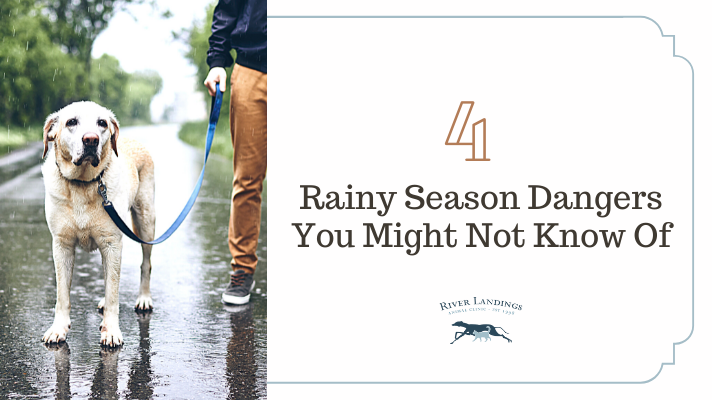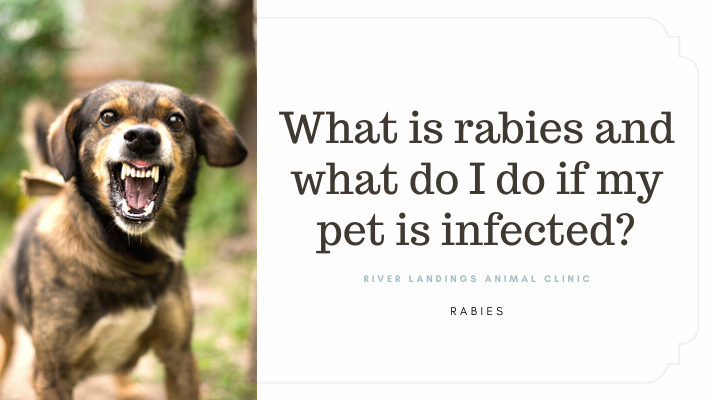What is rabies?
Rabies is a deadly disease caused by a virus that attacks the nervous system. The virus is secreted in saliva and is usually transmitted to people and animals by a bite from an infected animal. Less commonly, rabies can be transmitted when saliva from a rabid animal comes in contact with an open cut on the skin or the eyes, nose, or mouth of a person or animal. Once the outward signs of the disease appear, rabies is nearly always fatal.
What animals can get rabies?
Only mammals can get rabies; birds, fish, reptiles and amphibians do not. In the United States, most cases of rabies occur in wild animals—mainly skunks, raccoons, bats, coyotes, and foxes. In recent years, cats have become the most common domestic animal infected with rabies. This is because many cat owners do not vaccinate their cats and cats can be exposed to rabid wildlife, either outdoors or when bats get into the house. Rabies also occurs in dogs and cattle in significant numbers and, while not as common, has been diagnosed in horses, goats, sheep, swine and ferrets.
All mammals are susceptible to rabies.
Vaccination programs and control of stray animals have been effective in preventing rabies in most pets. Approved rabies vaccines are available for cats, dogs, ferrets, horses, cattle and sheep. Licensed oral vaccines are also being used for mass immunization of wildlife, particularly raccoons.
What are the signs of rabies in animals?
Once the rabies virus enters the body, it travels along the nerves to the brain. Animals with rabies may show a variety of signs, including fearfulness, aggression, excessive drooling, difficulty swallowing, staggering, paralysis and seizures. Aggressive behavior is common, but rabid animals may also be uncharacteristically affectionate. Horses and livestock with rabies also may exhibit depression, self-mutilation, or increased sensitivity to light. Rabid wild animals may lose their natural fear of humans, and display unusual behavior; for example, an animal that is usually only seen at night may be seen wandering in the daytime.
Although the most common signs of rabies are behavioral changes and unexplained paralysis, rabies should be considered in all cases of unexplained neurological disease. There is no treatment once the clinical signs of rabies appear.
Rabies infection of an animal can only be confirmed after death, through a microscopic examination of the animal’s brain.
How great is the risk of rabies to humans?
Rabies remains a major concern worldwide, killing around 59,000 people every year. Almost all of these deaths are due to rabies transmitted by dogs in countries where dog vaccination programs are not sufficiently developed to stop the spread of the virus.
Rabies vaccination and animal control programs, along with better treatment for people who have been bitten, have dramatically reduced the number of human cases of rabies in the United States. Most of the relatively few human cases in this country have resulted from exposures to bats; any contact with bats, even if a bite was not noticed, should be reported to your physician. Extremely rare cases have resulted from corneal or organ/tissue transplants from an infected donor. Dogs are still a significant source of rabies in other countries, particularly in Asia and Africa, so travelers should be aware of this risk and seek medical advice about vaccination prior to traveling outside of the United States.
What can I do to help control rabies?
Remember that rabies is entirely preventable through vaccination.
Have your veterinarian vaccinate your dogs, cats, ferrets, and select horses and livestock. Your veterinarian will advise you on the recommended or required frequency of vaccination in your area.
Reduce the possibility of exposure to rabies by not letting your pets roam free. Keep cats and ferrets indoors, and supervise dogs when they are outside. Spaying or neutering your pet may decrease roaming tendencies and will prevent them from contributing to the birth of unwanted animals.
Don’t leave exposed garbage or pet food outside, as it may attract wild or stray animals.
Wild animals should never be kept as pets. Not only may this be illegal, but wild animals pose a potential rabies threat to caretakers and to others.
Observe all wild animals from a distance. A rabid wild animal may appear tame but don’t go near it. Teach children NEVER to handle unfamiliar animals—even if they appear friendly.
If you see a wild animal acting strangely, report it to the city or county animal control department.
Bat-proof your home and other structures to prevent bats from nesting and having access to people or pets.
What if my pet has bitten someone?
Check with your veterinarian to determine if your pet’s vaccinations are up-to-date.
Report the bite to the local health department and animal control authorities. Local regulations may require that your pet is confined and isolated for monitoring for signs of rabies.
Immediately report any illness or unusual behavior by your pet to the local health department and to your veterinarian.
Don’t let your pet stray and don’t give your pet away. The animal must be available for observation by public health authorities or a veterinarian.
After the observation period, have your pet vaccinated for rabies if its vaccination is not current.
What if my pet has been bitten?
Consult your veterinarian immediately and report the bite to local animal control authorities.
Even if your dog, cat or ferret has a current vaccination, he/she should be revaccinated immediately, kept under the owner’s control, and observed for a period as specified by state law or local ordinance. Animals with expired vaccinations will need to be evaluated on a case-by-case basis.
Dogs, cats and ferrets that have never been vaccinated and are exposed to a rabid animal may need to be euthanatized in accordance with regulations or placed in strict isolation for six months.
Animals other than dogs, cats, and ferrets that are bitten by a rabid or potentially rabid animal may need to be euthanatized immediately.
What if I am bitten?
Don’t panic, but don’t ignore the bite. Wash the wound thoroughly and vigorously with soap and lots of water for 15 minutes, then treat with a disinfectant such as ethanol or iodine.
Call your physician immediately and explain how you were bitten. Follow the doctor’s advice. If necessary, your physician will give you the post exposure treatment recommended by the United States Public Health Service and may also treat you for other possible infections that could result from the bite.
If possible, confine or capture the animal if it can be done safely. Once captured, don’t try to pick up the animal. Call the local animal control authorities to collect it. If the animal cannot be captured, try to memorize its appearance (size, color, etc.) and where it went after biting you.
If it is a wild animal, only try to capture it if you can do so without getting bitten again. If the animal cannot be contained and must be killed to prevent its escape, do so without damaging the head. The brain will be needed to test for rabies.
Report the bite to the local health department. Prompt and appropriate treatment after being bitten and before the disease develops can stop the infection and prevent the disease.
Pets and rabies vaccine bait
Bait containing rabies vaccine is commonly used for mass wildlife immunizations. The bait does not pose a health risk to you or your pets, but it is best to leave the bait undisturbed.



